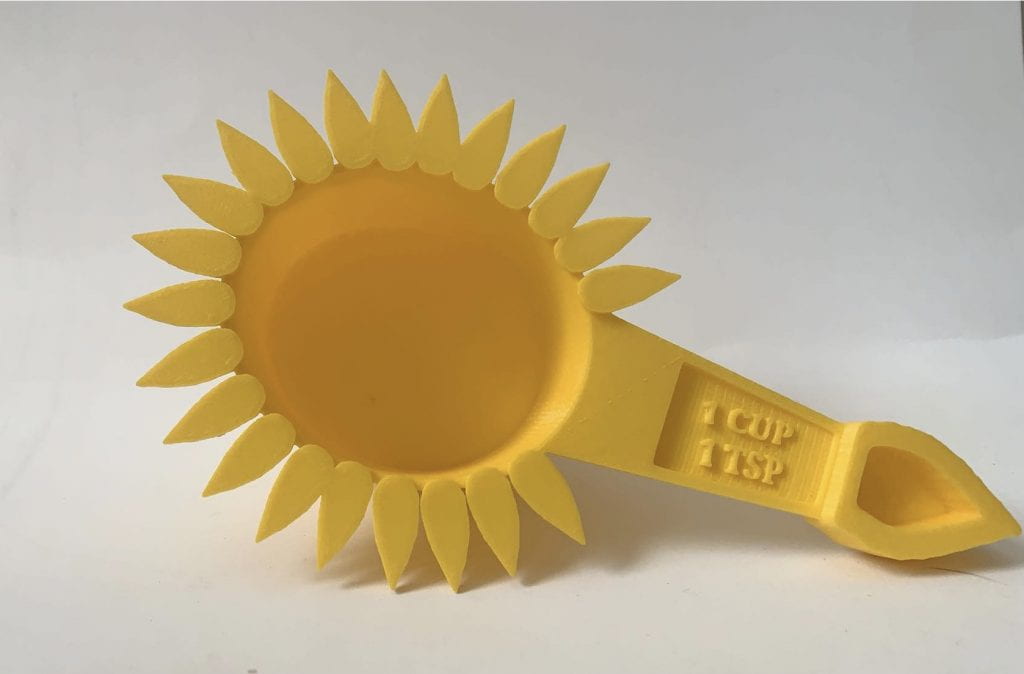Research & Concept
The functional form I decided to add playfulness to is an ordinary kitchen measuring cup. The original design I worked off of is measuring cups with the measurement for cups on one end, and the measurement for tablespoons and teaspoons on the other end. The measuring cups are used in the kitchen when you are cooking. They allow for you to measure the exact amount of an ingredient needed for a recipe. I knew I wanted to choose a kitchen item to inject playfulness into. When you are cooking in the kitchen, it’s always good to have fun while doing it, especially if you are cooking with kids. As a child, I always loved to cook with my mom in the kitchen, and if we had measuring cups like these it would have made it all the more fun.

I decided to add playfulness to the plain measuring cups by adding a floral appearance to the design. I added flower petals along the rim of the cup side of the measuring cups. Therefore, from a bird’s eye view, the cup itself appears as the center of the flower with the petals flaring out. I designed the tablespoon side of the measuring cup to be in the shape of a leaf, extending from the measuring cup by the handle. When all of the measuring cups are stacked on top of each other, it is meant to create a 3-dimensional flower.

Iterations
The element that worked best on the print of my floral measuring cup was the petals surrounding the edge of the cup itself. I was skeptical at first when designing this model, about the durability of the petals and whether they would fit nicely onto the rim of the cup. I used the scribble tool in Tinkercad to create a free flowing design of the petal, and then copied the design multiple times to give the array of petals the appearance of uniformity. After the print was finished, I was mostly happy with the quality of the attached petals, however I would increase the thickness of the petals in any additional re-prints I make to give them a slightly bulkier appearance. An element that did not work as well as I’d hoped on my measuring cup was the addition of the leaf-shaped teaspoon end. When designing the model, I tried extending the rectangular handle and adding a hollow leaf shape with the scribble tool. During the print, the edges became slightly warped and the hole for the teaspoon was not as defined as it should be.
After my first print, I went back into Tinkercad and made some revisions to refine the original model. I removed the block shaped bottom from under the leaf teaspoon end and I made the hole for the teaspoon larger and more defined.
Final Print
For my final print, I used Tinkercad to fix the teaspoon end of my measuring cup by removing the block base and making the edges smoother to give it a more leaf-like appearance. I also increase the size of the hole in the teaspoon. This is my final print because it incorporates everything I hoped it would when I was initially designing the measuring cup in Shape3D and Tinkercad. I printed the final model with an increased infill and a raft. I was very happy with my final print as a whole. I tested the measuring cup in my kitchen and used it to make chocolate chip cookies. The functionality was successful.









